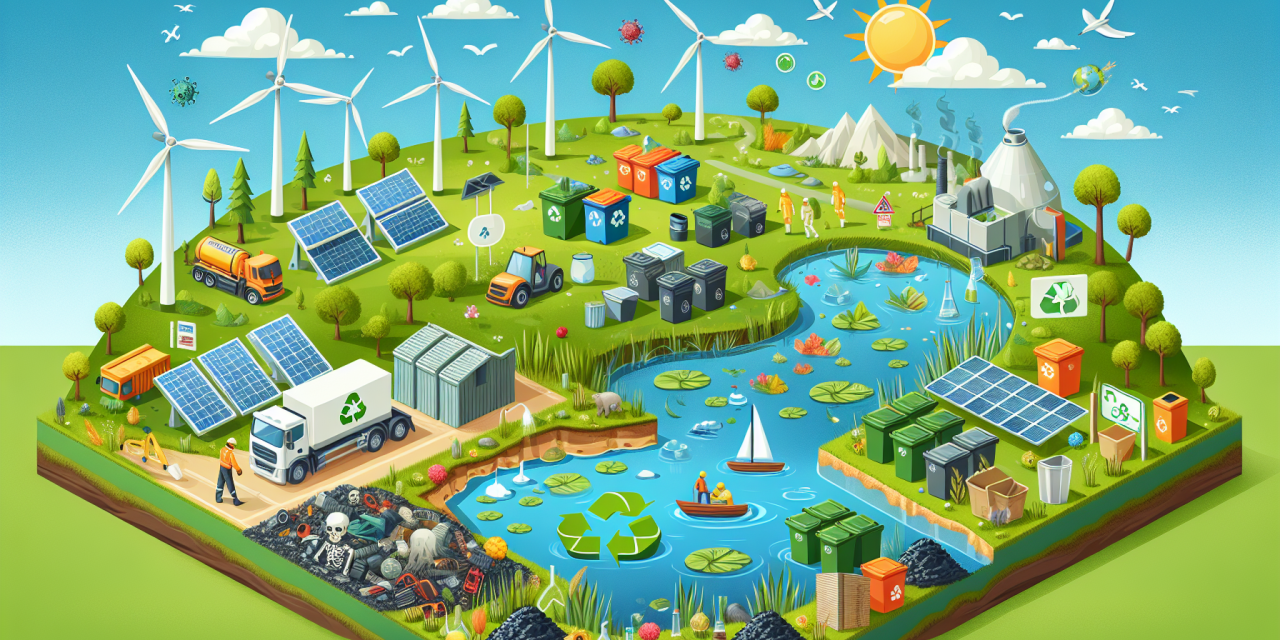Table of Contents
- Introduction
- Understanding Hazardous Waste
- Consequences of Contamination
- Effective Management Practices
- The Importance of Training
- Join the Eco-Friendly Hazardous Waste Management & Prevention Conference
- FAQs
- Conclusion
Introduction
In recent years, environmental awareness has surged, bringing contamination and hazardous waste management to the forefront of discussions. Organizations, both large and small, are increasingly recognizing their responsibility toward sustainable practices. As a result, finding effective ways to manage and prevent hazardous waste is becoming crucial.
Understanding Hazardous Waste
Hazardous waste refers to materials that are dangerous or potentially harmful to human health or the environment. This classification includes a diverse range of waste, from chemicals originating in manufacturing processes to batteries, biomedical waste, and beyond. Thus, it’s imperative to understand what qualifies as hazardous waste.
Types of Hazardous Waste
To effectively manage hazardous waste, one must first identify the types. Common categories include:
- Chemical Waste: Overlaps with everyday items like solvents and paints.
- Biomedical Waste: Includes materials generated from healthcare activities.
- Electronic Waste (E-Waste): Consists of discarded electronics and electrical devices.
Consequences of Contamination
Not managing hazardous waste effectively can lead to severe consequences. Contamination can occur within soil, water, and air, potentially causing long-term environmental damage and posing health risks to humans and wildlife.
Environmental Impact
Contamination disrupts ecosystems, leading to loss of biodiversity and habitat destruction. Additionally, harmful substances may find their way into the food chain, affecting both animals and humans.
Health Risks
Exposure to hazardous waste can result in various health issues, such as respiratory problems, skin diseases, and more severe conditions like cancer. Therefore, reducing exposure should be a priority.
Effective Management Practices
Implementing effective hazardous waste management practices not only helps in compliance with regulations but also protects the environment and public health.
Prevention Strategies
Preventing hazardous waste generation is possible through several strategies:
- Source Reduction: Use eco-friendly materials and reduce excess production.
- Substitution: Replace hazardous materials with safer alternatives.
- Process Modification: Change processes to minimize or eliminate waste generation.
Waste Reduction Techniques
Once waste is generated, it’s essential to have techniques in place for reducing its impact:
- Recycling: Promote the recycling of materials.
- Composting: Organic waste can often be composted instead of being classified as hazardous.
- Proper Disposal: Dispose of hazardous waste through licensed facilities.
The Importance of Training
One of the most effective ways to ensure a comprehensive understanding of hazardous waste management is through ongoing training. When employees are informed about best practices and legal requirements, they can better contribute to creating a sustainable workplace.
Join the Eco-Friendly Hazardous Waste Management & Prevention Conference
Attending the Eco-Friendly Hazardous Waste Management & Prevention Conference allows participants to learn from top experts in various fields related to hazardous waste management. This conference offers workshops, networking opportunities, and insights that can help organizations develop better practices for managing hazardous waste.
Networking Opportunities
The value of networking cannot be overstated. Through interactions at this conference, attendees can establish valuable connections and exchange ideas with like-minded individuals and organizations.
Expert Insights
Industry experts will present the latest trends and research in hazardous waste management, equipping attendees with the tools they need for effective management and prevention.
FAQs
What is hazardous waste?
Hazardous waste refers to waste materials that pose a significant risk to human health or the environment due to their chemical, physical, or biological properties.
How can organizations prevent hazardous waste?
Organizations can implement source reduction techniques, substitute hazardous materials with safer options, and modify processes to minimize waste generation.
What are the consequences of not managing hazardous waste?
Failure to manage hazardous waste can lead to environmental contamination, serious public health risks, and substantial regulatory penalties.
How does the conference help in hazardous waste management?
The Eco-Friendly Hazardous Waste Management & Prevention Conference brings together industry experts who provide invaluable insights, best practices, and the latest trends in hazardous waste management, helping organizations improve their practices.
Conclusion
In conclusion, understanding contamination and hazardous waste management is critical for every organization. By adopting eco-friendly practices and actively participating in events like the Eco-Friendly Hazardous Waste Management & Prevention Conference, we can ensure a safer and more sustainable future. Remember, prevention is always better than cure, so let’s take measures to minimize hazardous waste through informed practices.
Furthermore, for additional insights into procurement and supply chain management, consider exploring these resources:
- Understanding Tendering Procedures and Bid Evaluation Conferences for Successful Procurement
- Navigating the Landscape of Supply Chain Risk Management: Insights from a Premiere Conference
- Enhancing Supply Chain Resilience: Insights from the Leading Supply Chain Risk Management Conference
- Unlocking Efficiency: Insights from the Strategic Purchasing & Supply Management Conference
- Unlocking Success through Strategic Purchasing & Supply Management: A Comprehensive Guide





